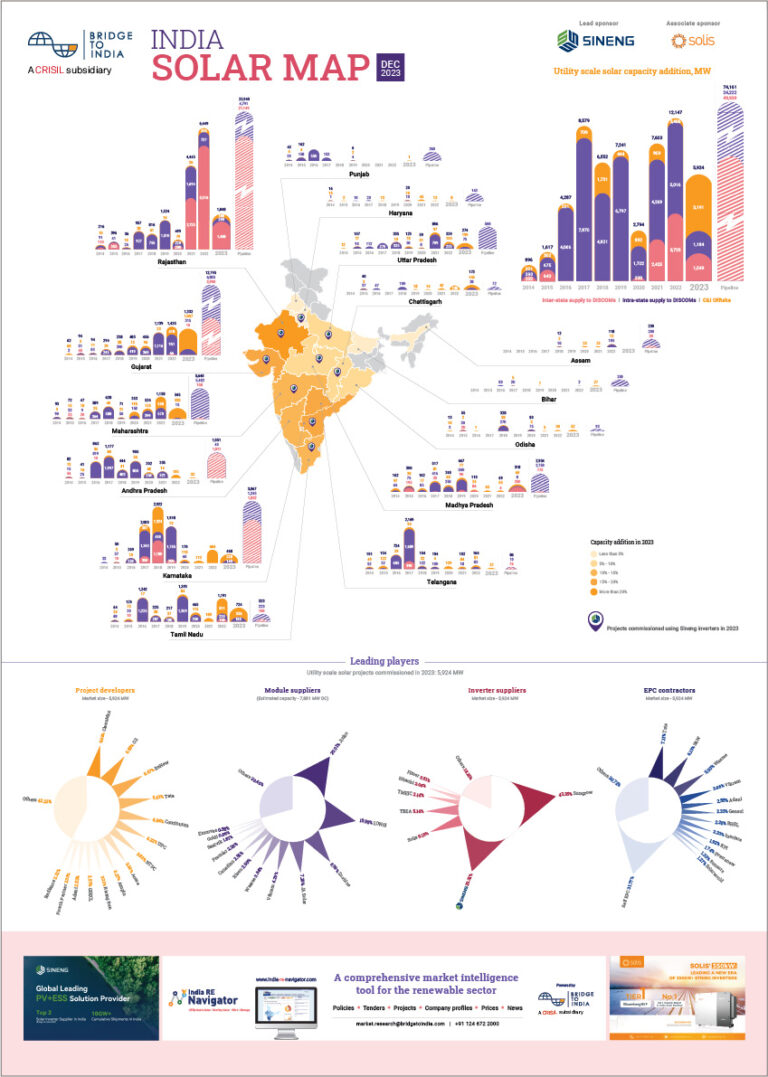The worldwide standard for measuring a solar plant’s performance is the Performance Ratio (P.R.). However, most project developers, investors and EPC contractors in India use the Capacity Utilization Factor (C.U.F.) as the standard of measuring the performance of a plant.
Our team sat down and attempted to demystify these differences. But soon enough, we realized that quite a few people in the industry really do not understand the difference. This is where I figured this is worth sharing with a wider audience.
Let us begin by understanding the definitions of C.U.F. and P.R.
P.R. is defined as:
Where,
C.U.F. is defined as:
Therefore the relationship between the two becomes:
Now that we have established the mathematical relationship between C.U.F. and P.F., what do they actually mean?
The P.R. is a measure of the performance of a PV plant at a given irradiation level. If you look closely at the denominator of the equation for P.R., we have normalized the ratio against the irradiance level for that specific location. Now, if the plant were to be moved to another location with a different irradiance level, then the equation would consider the irradiation level at that location. So in a way, the equation adjusts itself against the location of the plant. This proves to be extremely useful when comparing the quality of a plant (construction and operation) in different locations.
Another important aspect of the P.R. is that it only evaluates the plant performance against the energy available from the sun. That is, it automatically discounts night times, when the sun does not shine. We shall understand why this is important when we look into the C.U.F. formula.
The C.U.F. is a measure of ‘how well a plant is utilized’. This is important because a PV plant is an asset with a limited life and the investor would like to extract as much value from the plant as possible. This is helpful when comparing one or more energy technologies – thermal versus solar or wind, for example. If we take a look at the C.U.F. we see that the formula evaluates the energy generated from the solar plant against 100% of the existence of the plant i.e. 8,760 hours in a year in this case (including night times when it is impossible to generate any energy). This means that if we have a 20% C.U.F., the investment is ‘being usefully utilized’ for 20% of the maximum possible limit. Now, if we move the plant to another location, the CUF will change because the equation DOES NOT adjust itself against variations in locations (look at the denominator!). In that sense, the CUF is unfair because it ignores radiation specific to locations and it ignores night times when the plant really cannot do anything.
To sum up our understanding, the P.R. is a very useful tool to compare PV plants across the world and it directly reflects on the quality of construction and maintenance. The C.U.F. on the other hand is very useful in comparing different technologies and is particularly important to an investor who would like to know which technology offers maximum value.












